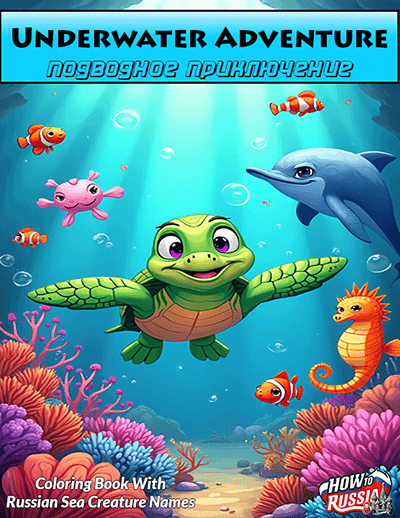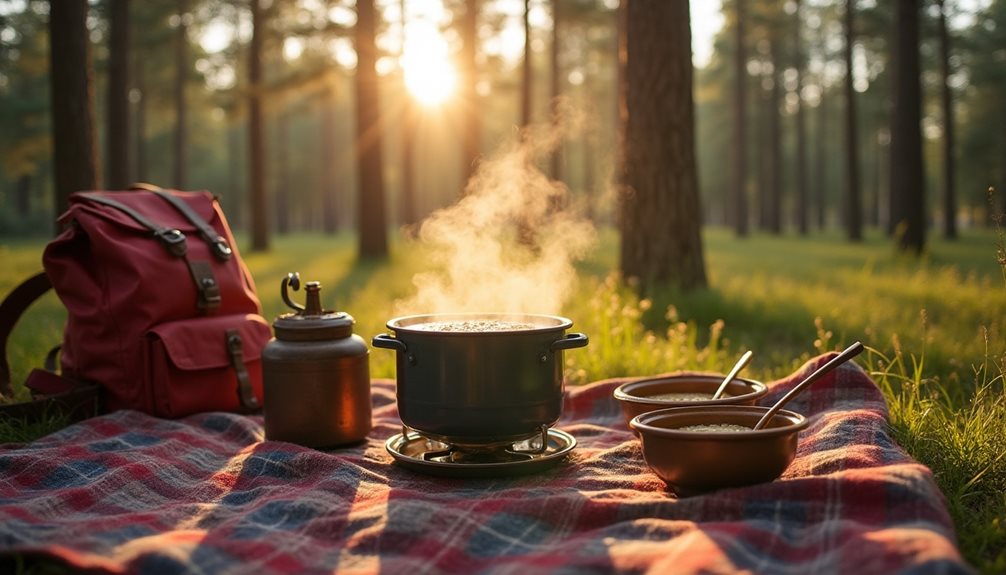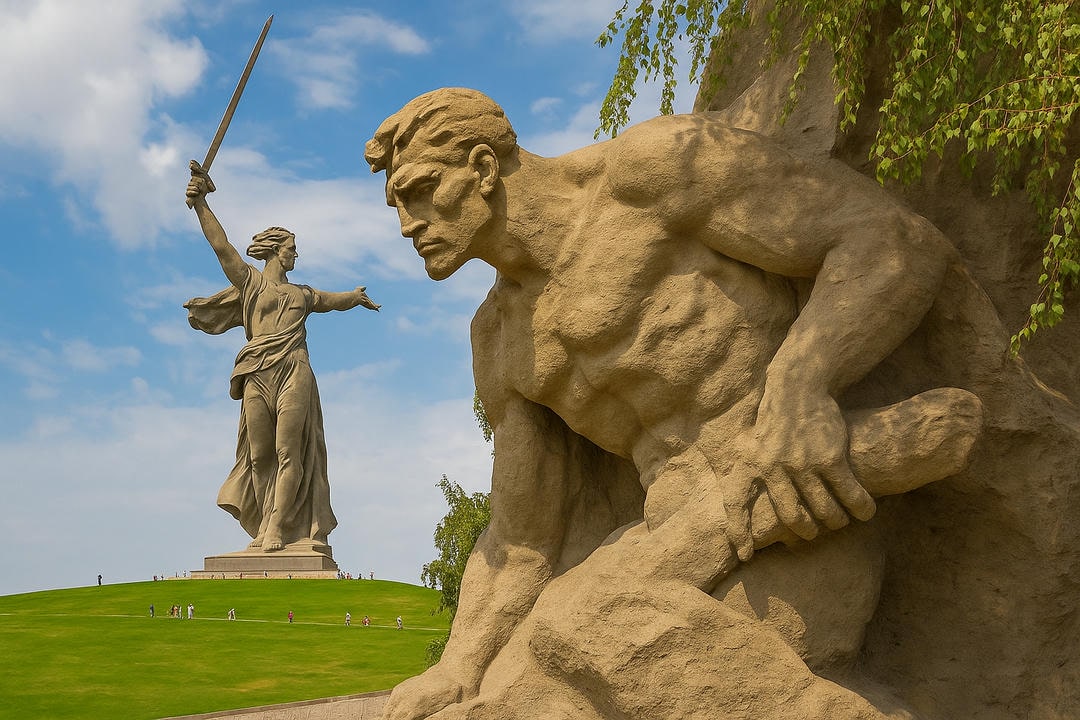When you think about teaching children Russian, you might not immediately consider coloring books, but they offer unique advantages. These books do more than just keep kids entertained; they enhance motor skills and cognitive development through multisensory learning. Imagine your child connecting with Russian vocabulary and cultural themes in a meaningful way, making the language come alive. Not only that, interactive activities like group sessions and games can further solidify their language skills. But how do you choose the right book and guarantee consistent practice? There’s more to uncover about this innovative approach.
We are happy to announce as of this article HowToRussia.com will start releasing free children’s coloring books with English and Russian words assisting in children learning Russian words. Our first free coloring book is Underwater Adventure, you can download it here for free!
Benefits of Coloring Books

Coloring books offer numerous benefits, especially when it comes to helping children learn a new language like Russian. They’re not just fun; they’re also powerful tools for cognitive development. When kids color, they’re not only engaging their creativity but also improving their ability to recognize patterns and shapes. This is vital for learning the Cyrillic alphabet, which is different from what they might be used to.
Moreover, coloring helps boost motor skills. Holding crayons and staying within the lines requires precision and control, which strengthens the small muscles in their hands and fingers. This fine motor skill development is essential not only for writing in Russian but for other daily activities too.
Coloring activities can make learning Russian feel less like a chore and more like an adventure. Your child is more likely to stay engaged and retain new words when they associate them with fun, colorful images. This approach aligns with research suggesting that multisensory learning experiences improve memory and understanding.
Choosing the Right Book
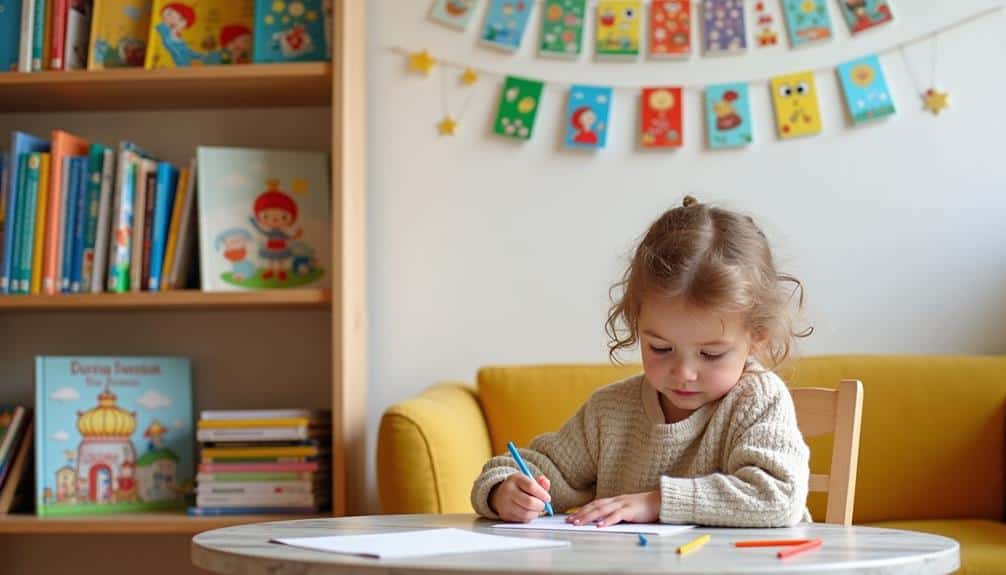
When you’re picking out the perfect coloring book for your child to learn Russian, it’s important to focus on a few key factors. First, consider the book types available. Some books concentrate on basic vocabulary, while others might incorporate simple sentences or cultural themes. Choose a type that aligns with your child’s current learning stage and interests.
Next, think about age suitability. Younger children benefit from books with large, simple images and bold lettering. These features help them focus on both coloring and recognizing new words. For older kids, books with more detailed illustrations and complex phrases can be more engaging and educational.
You should also look for books that balance fun and learning. A well-designed coloring book will captivate your child’s imagination while subtly introducing them to the Russian language. Check for reviews or recommendations to verify the book is both enjoyable and educational.
Moreover, the material should be developmentally appropriate. Research suggests that children learn best when they’re engaged in activities that match their cognitive and motor skills. By choosing the right book, you give your child the freedom to explore a new language in a fun, creative way.
Integrating Vocabulary
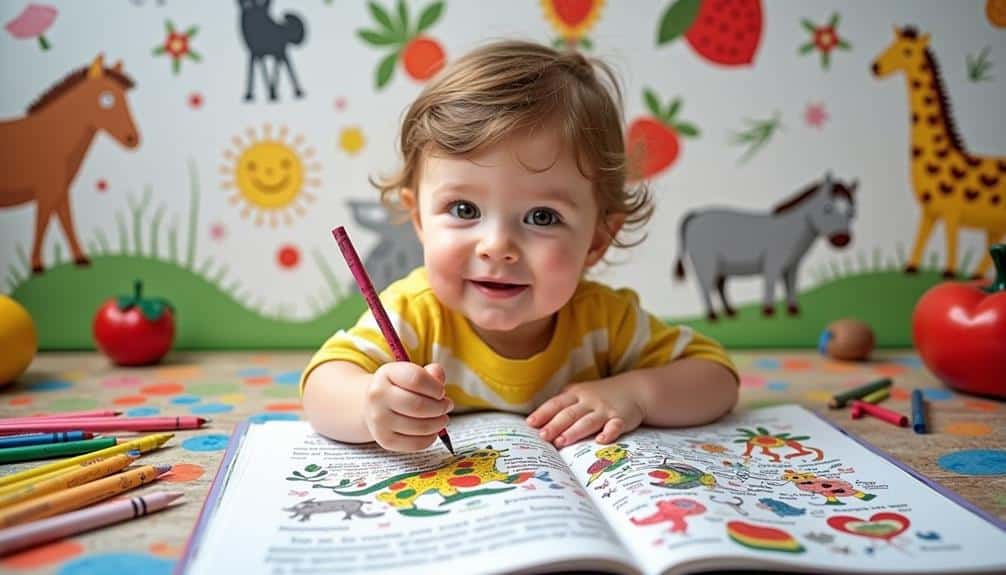
To effectively integrate vocabulary into your child’s coloring activities, start by selecting words that are relevant and easily recognizable. Pick simple nouns like “apple” (яблоко), “cat” (кот), or “house” (дом). These words should be accompanied by clear images in the coloring book, reinforcing visual learning.
Encourage your child to say the words aloud as they color. This practice not only makes the activity engaging but also reinforces language retention. You can use flashcards or labels for objects around your home to create a consistent learning environment. Research supports that repeated exposure to vocabulary in various contexts strengthens memory.
Incorporate interactive elements like asking your child to find all the “коты” (cats) in a picture or to color the “дом” (house) in a specific color. This makes the learning process dynamic and fun, promoting a sense of freedom and creativity.
Cultural Themes
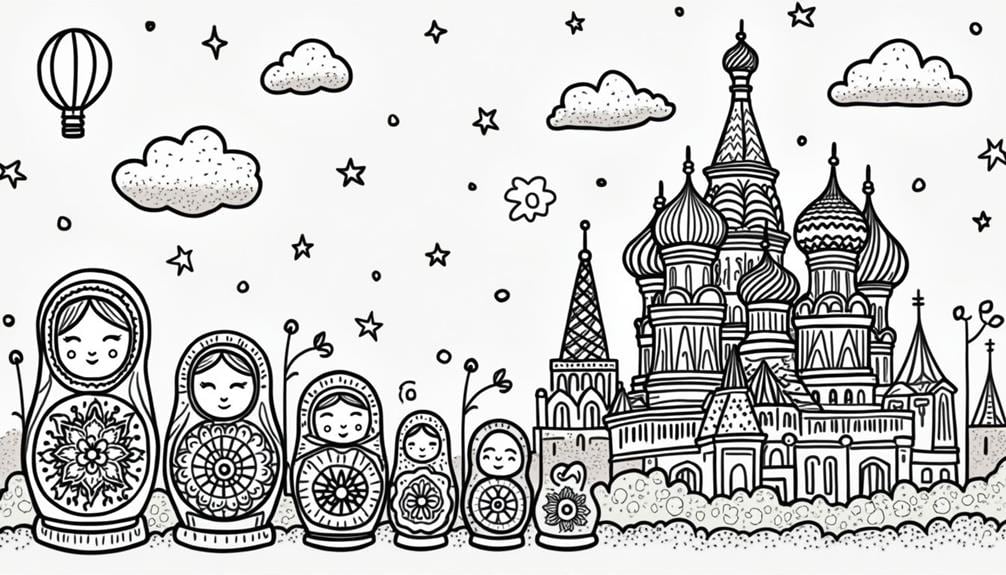
Delving into cultural themes through coloring books can immerse your child in the rich tapestry of Russian heritage. Picture your child coloring scenes from Russian folklore, bringing to life characters like Baba Yaga and Ivan Tsarevich. Through these stories, they’ll not only learn language but also absorb the essence of Russian storytelling traditions.
Imagine your child coloring traditional costumes, like the sarafan and kokoshnik. They’ll get a feel for the vibrant patterns and the histories behind these garments.
Holiday celebrations, such as Maslenitsa or Russian New Year, can be depicted in the pages, showing your child how Russians celebrate with food, dance, and festivities.
Regional cuisines can be explored, too. Coloring pages featuring borscht, blini, and piroshki will introduce your child to the delicious diversity of Russian food.
Famous landmarks like the Kremlin or St. Basil’s Cathedral can become familiar sights, creating a sense of connection to Russia’s architectural wonders.
Cultural festivals come alive with illustrations of parades and performances, while art history can be introduced through coloring famous works by Russian artists.
Children’s stories and folklore offer an enchanting way to connect with the culture, making learning both fun and meaningful.
Interactive Activities
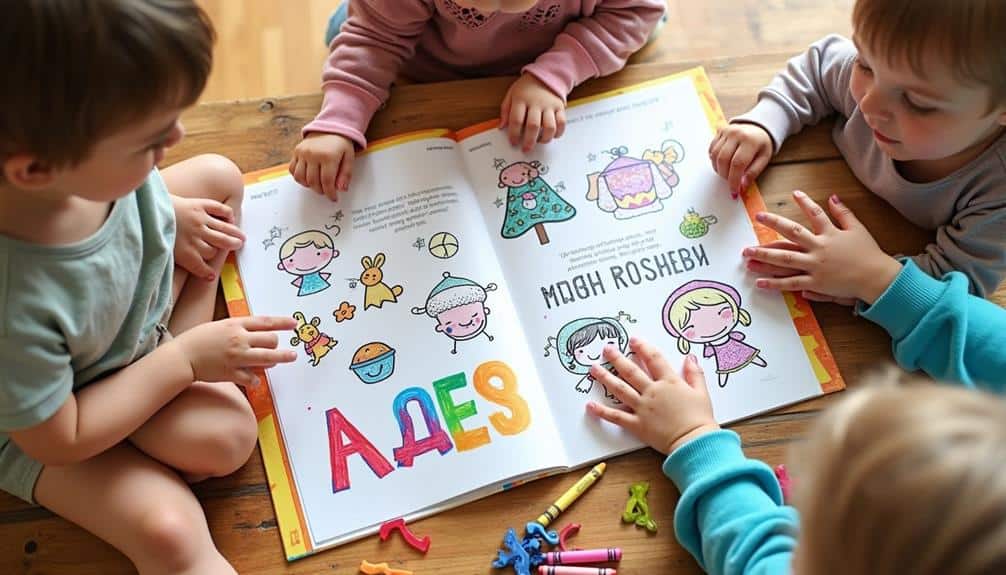
As your child colors their way through the vibrant stories and traditions of Russian culture, you can enhance their learning experience with interactive activities. Incorporating diverse coloring techniques like shading and blending can make the process more engaging.
Encourage your child to experiment with different textures and color combinations. This not only boosts creativity but reinforces their understanding of Russian words and phrases that they encounter in the coloring book.
Group activities are another fantastic way to deepen their learning. Organize a coloring session with their friends, where each child works on a page featuring a different aspect of Russian culture.
As they color, facilitate discussions about the images. Ask questions like, “What do you think this word means?” or “Can you describe this scene in Russian?” Peer learning can be incredibly effective, as children often learn best from each other.
You can also integrate interactive games related to the coloring book. For instance, create a scavenger hunt where your child finds and colors specific items while learning their Russian names.
These activities make learning dynamic and enjoyable, fostering a deeper connection to the language and culture.
Consistent Practice
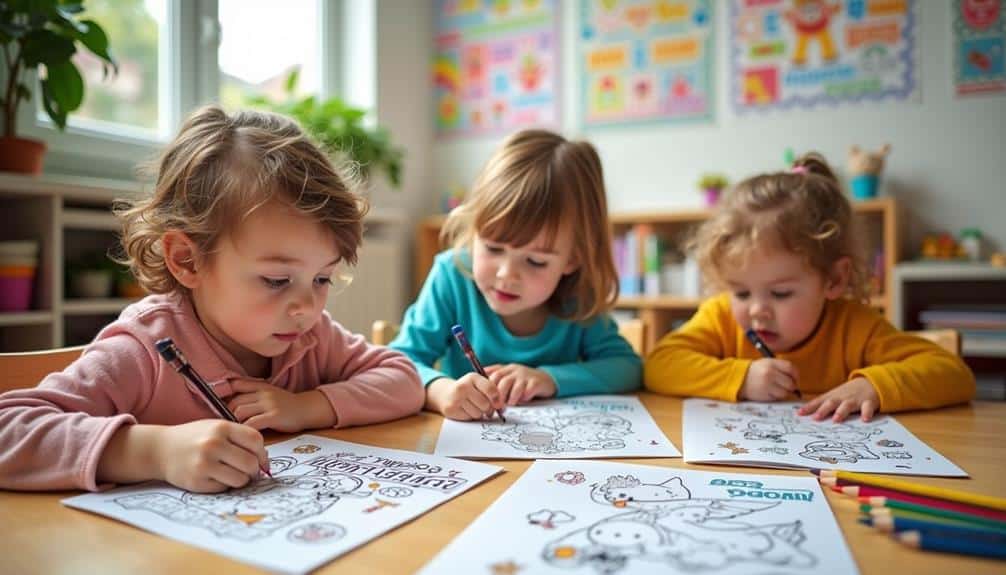
Consistency is key when it comes to mastering a new language, and daily practice can make a world of difference for your child’s journey in learning Russian. By establishing daily routines, you can help your child feel more comfortable and confident with the language. Set aside a dedicated time each day for your child to engage with their Russian coloring books. This regular practice will reinforce what they’ve learned and make it part of their daily life.
Incorporate repetition techniques to solidify their understanding. For example, you might’ve your child color the same page multiple times over a week, but each time, focus on different vocabulary words or phrases. Repetition not only helps in memorizing new words but also in understanding their context and usage.
Make these sessions fun and flexible. Allow your child to explore the coloring book at their own pace, which promotes a sense of freedom and reduces resistance to the learning process.
Tracking Progress

To truly appreciate your child’s progress in learning Russian through coloring books, it’s important to track their milestones and celebrate achievements along the way. Doing so not only boosts their confidence but also helps you understand what areas need more focus.
Start with a simple progress assessment method—use stickers or stars to mark completed pages. This visual tracking technique provides an easy way for both you and your child to see their growth.
Create a chart that lists different vocabulary words or phrases they’ve learned. Update it regularly as they master new terms. This helps in reinforcing memory and gives a clear picture of their expanding language skills. Make sure to include small rewards for reaching certain milestones to keep motivation high.
Another effective strategy is to periodically review old coloring pages. Ask your child to name the objects or characters in Russian. This not only acts as a refresher but also allows you to gauge retention over time.
Keep notes on areas where they excel and where they struggle.
Encouraging Creativity
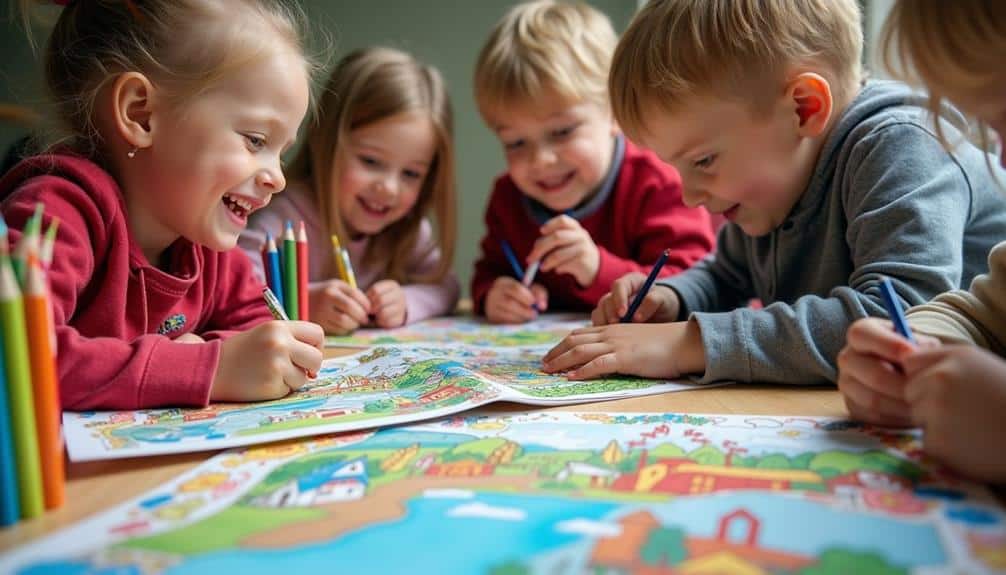
Releasing your child’s creativity while they learn Russian can make the process both fun and effective. By incorporating artistic expression into their language learning, you’re not only teaching them new words but also encouraging imaginative play. Coloring books offer a fantastic medium for this. When kids color pictures related to Russian culture or vocabulary, they engage multiple senses, solidifying their learning experience.
Encourage your child to use a variety of colors and let their imagination run wild. They might decide that a Russian bear should be purple or that a matryoshka doll should have rainbow patterns. This freedom in artistic expression helps them associate positive emotions with learning, making them more likely to retain new words.
Research shows that imaginative play is essential for cognitive development. By combining language learning with creative activities, you’re fostering a holistic educational experience.
Let your child draw their own pictures based on Russian words they’ve learned, or even create stories around those images. This not only reinforces vocabulary but also boosts their confidence and problem-solving skills.
Combining With Other Tools

While encouraging creativity through coloring books is a fantastic start, pairing them with other learning tools can amplify your child’s Russian language acquisition. Incorporating digital resources like language apps or online games offers interactive elements that keep kids engaged and make learning fun.
These tools often use multi-sensory learning methods, which can help your child retain new words and phrases more effectively.
Don’t underestimate the power of language games. Simple games that involve identifying objects or practicing vocabulary can be both educational and entertaining.
Storytelling techniques also play a significant role. Reading Russian stories together, or even creating your own, helps children understand context and enhances their language skills.
Visual aids, such as flashcards or posters, can reinforce learning from coloring books. Art therapy techniques, where kids express themselves through drawing while discussing their artwork in Russian, make learning feel less like a chore and more like a creative adventure.
Community involvement is another key component. Engaging with Russian-speaking groups or attending cultural events can immerse your child in the language.
And, of course, parent engagement is essential. Your active participation and encouragement can make all the difference in your child’s learning journey.
Incorporating coloring books into your child’s Russian learning journey offers a fun, research-backed way to boost their language skills. You’ll find that these books enhance fine motor skills, expand vocabulary, and introduce cultural themes seamlessly. Engage in interactive activities and track their progress to make learning exciting and effective. Encourage creativity and combine coloring books with other tools for a well-rounded approach. With consistent practice, you’ll see their language skills flourish in no time!


